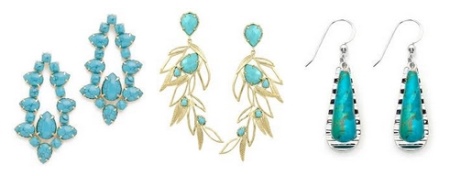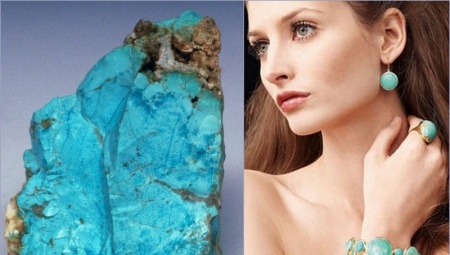Turquoise earrings are a fashion trend, a jewelry that organically fits into a variety of styles in clothes. On sale you can find jewelry in different price ranges and completely dissimilar in design. The abundance of proposals makes you think about what criteria you need to choose earrings and what determines the price of jewelry.
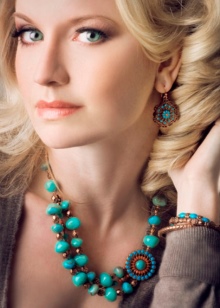


Features
Turquoise has been used in jewelry since ancient times, it was valued for its beautiful color and endowed with the ability to beneficially influence the fate of a person. The name of the mineral is associated with the Persian word “happiness”. This opaque colored stone is characterized by blue, blue, green shades, so it is often called "heavenly". Many of its deposits are known all over the world, however, production volumes are small, this is due to the small reserves of turquoise.
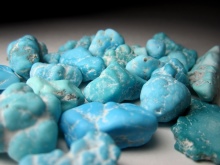
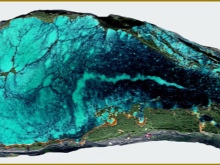
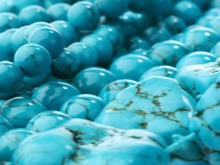
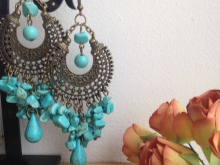
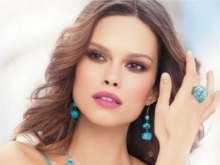
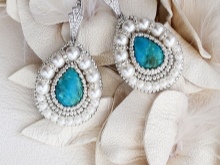
Turquoise of high jewelry quality is a rarity, a significant part of natural samples is subject to additional special processing, including refinement.
Natural stone that has not undergone processing requires an extremely careful attitude to itself, since it tends to fade in the sun over time, change color due to contact with the human body, under the influence of environmental conditions, deteriorate from exposure to oils, alcohols and other substances.
The quality of a natural mineral, in terms of its use in the jewelry industry, may be different. The physical properties and appearance of different images can vary greatly. Some specimens are classified as precious stones, others as semi-precious, some are considered suitable for refinement. Accordingly, in terms of cost, different types of turquoise also vary greatly.

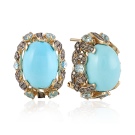
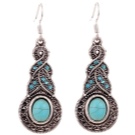
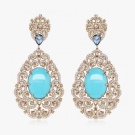

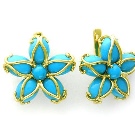
Types of turquoise in the inserts
The quality of natural turquoise can be improved by soaking it with special transparent substances. Thus, the stone is protected from fading, made harder and denser. It turns out the so-called fortified, or stabilized, turquoise. If necessary, it can also be tinted in order to give the desired shade or even color.


So get a bright green or even pink stone, which can be seen in various jewelry, including earrings. Tinted, ennobled turquoise should not cost more than a stone of natural natural colors.
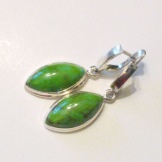
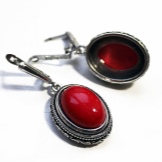
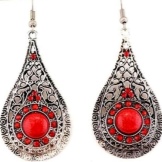
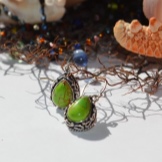
Sometimes inserts in earrings are made from reconstructed (restored, or pressed) turquoise. This means that the stone is obtained from pressed powder of natural turquoise of different quality, special substances were used to fasten the natural material. Earrings with such inserts are included in the category of inexpensive jewelry.
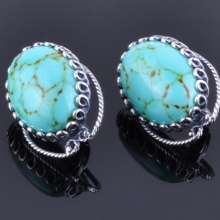
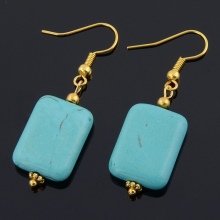
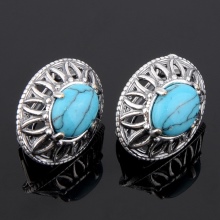
Reinforced, refined or pressed stone is considered turquoise. But such jewelry material should cost less than natural, not processed by the above methods.

Design options
Turquoise earrings can be presented in gold or silver. This colored stone is most often presented in the form of a cabochon, that is, by grinding and polishing it is given a rounded shape. Such a cabochon can be the only insert in the earrings, and can be framed with other stones or be part of the composition.
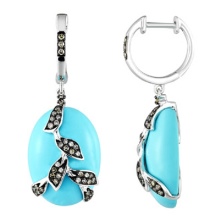
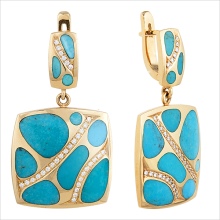
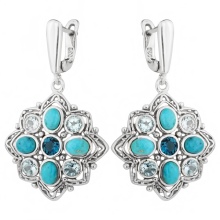
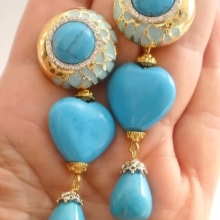
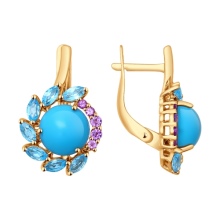
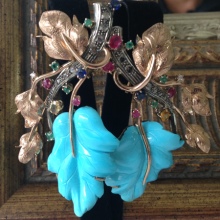
Natural turquoise earrings may include:
- Diamonds
- Emeralds;
- Colored cubic zirconias (green, red, blue);
- Colorless cubic zirconias;
- Marcasites;
- Corals
- Chrysolites;
- Blue topazes;
- Pearls;
- Amethysts;
- Grenades.

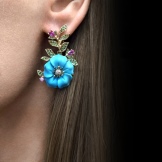
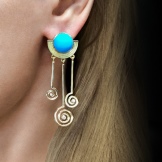
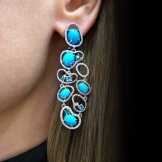
An effective combination of turquoise with red stones; green, blue, blue and violet are also often used, together with the "heavenly stone" they make up compositions that combine colors adjacent in the color wheel. Cubic zirconias and marcasites are often used to frame the cabochon.
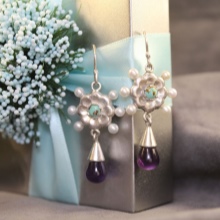
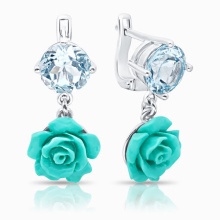
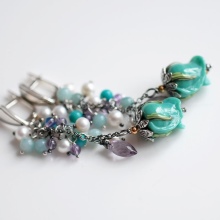
High quality turquoise is used in jewelry in combination with gold. In gold earrings it can be combined with diamonds. In silver you can see natural turquoise of lower quality or pressed, strengthened, and also ennobled. Inexpensive natural stones in silver earrings can look very impressive.



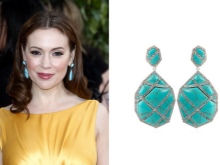
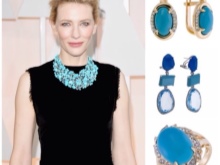
Models
Earrings with inserts from this colored stone are represented by a very large number of models. It can be:
- Stud Earrings;
- Clips;
- Earrings rings;
- Earrings with pendants;
- "Classic" earrings.

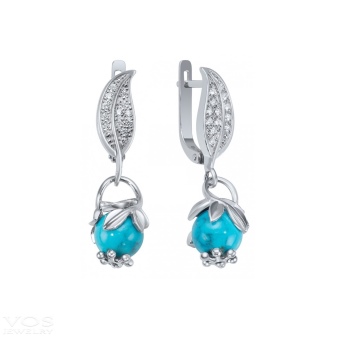
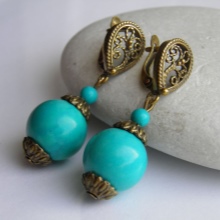

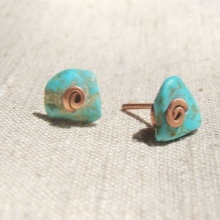
Pendants with pendants can have an English lock, a clove lock or be without a lock. Pendant earrings are extremely diverse. It:
- Long earrings with “clusters” of small beads made of “stone of happiness”;
- Pendants with large turquoise cabochons (round, oval, drop-shaped) in a wide openwork frame or in a narrow deaf;
- Chandelier earrings with a large number of small turquoise pendants;
- Pendants on a long chain;
- Pendants with a fancy-shaped stone entwined with metal wire;
- Pendants with a stone in the shape of a ball or drop.
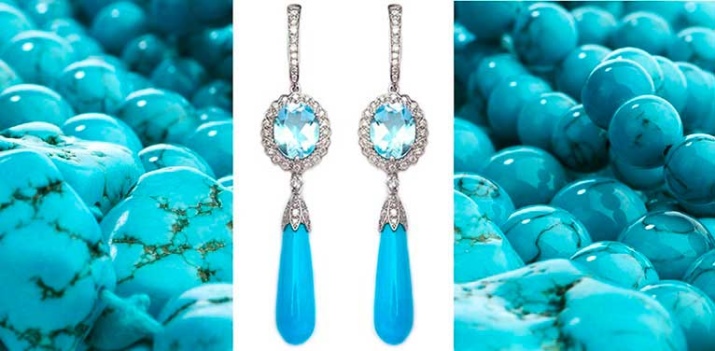
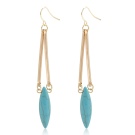
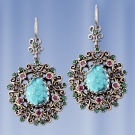


Earrings can be made in different styles. These may be models:
- In oriental style, in ethno-style;
- In the style of "retro", "vintage" earrings;
- Laconic jewelry "for every day."

Imitation Earrings
Also on sale are earrings with imitation of a “stone of happiness”. For imitations, natural, but tinted stones or minerals, the color of which resembles turquoise, can be used. The list of such stones is quite wide.

Often used as an imitation of turquoise is a tinted mineral of howlite (it is also kaulit, howlite, and turkvenite). In nature, it is light in color, but has dark veins resembling the structure of natural turquoise. It is quite difficult for a layman to distinguish such an imitation from the original.
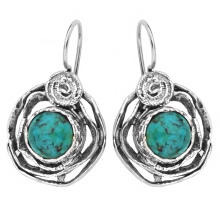
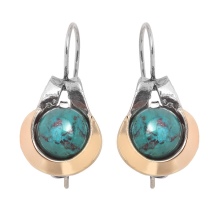
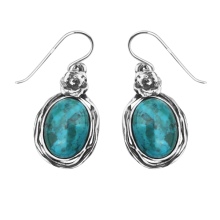
Imitations can be made not only from natural materials, but also chemically from various substances, some formulations were developed in ancient times. The earliest known imitations were made in ancient Egypt of stained glass. In the 19th century, a method of making imitation called “Vienna Turquoise”, which included malachite, became known.
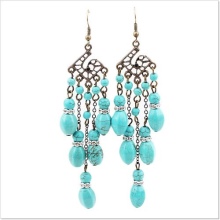

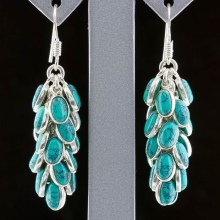
Often earrings with imitation turquoise are made of silver, such an insert in jewelry may be the only one, or it can be combined with synthetic stones of the same color scheme or with inserts of other colors.

It can be:
- Synthetic amethyst;
- Synthetic blue topaz;
- Synthetic blue spinel;
- Blue, green or red cubic zirconia;
- Artificial pearls.

In the twentieth century, the “stone of happiness" learned not only to imitate, but also to synthesize. Such a stone is difficult to distinguish from a mineral mined in nature, since it has physical characteristics that are absolutely identical to natural.

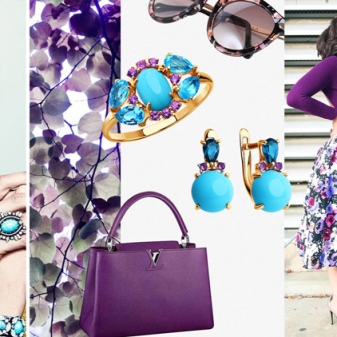
Magical properties
Since ancient times, the mineral has been endowed with wonderful and magical properties. It was believed that the stone attracts luck, helps maintain health and heal from diseases, protects lovers, is a talisman for a happy family life.
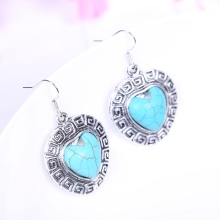


The property of a mineral to discolor over time due to the influence of various factors was often explained by the ability of a stone to respond to the state of health of its owner: it was assumed that if a person becomes ill, turquoise changes color.

Turquoise is considered a reconciling stone, which can help in restoring good relations in the family and at work, and contributes to concentration.
Jewelry with a "stone of happiness" is usually given to beloved.

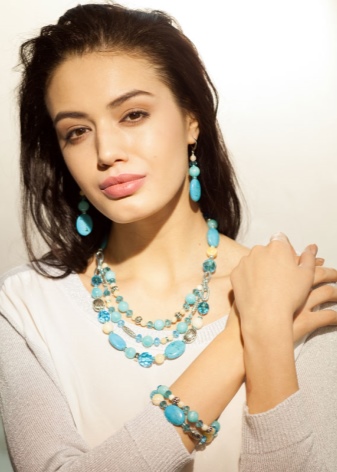
The number of beliefs and rituals associated with turquoise is very large: it was revered at different times and in different cultures. Not only jewelry was made from turquoise, but also talismans, sacred objects. The ancient Egyptians carved from the mineral figures of sacred beetles - the so-called scarabs, the Aztecs encrusted ritual masks with it. Traditionally, stone is very much appreciated in many different countries.
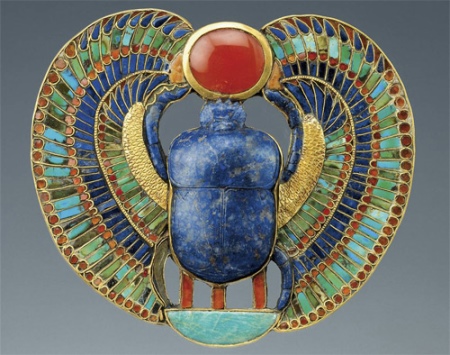
How to care?
Natural mineral has a porous structure. For this reason, it is able to absorb various liquids, oils and fats. This may affect its color. Inserts made of natural, not subjected to special processing, turquoise in jewelry require special care.
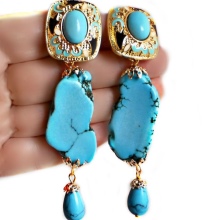
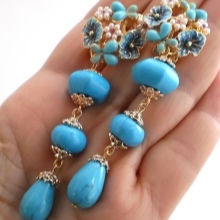
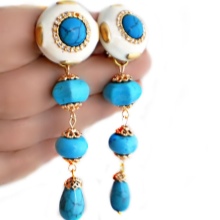
Earrings should be protected from the effects of alcohol-containing liquids, such as perfumes, eau de toilette or eau de parfum;
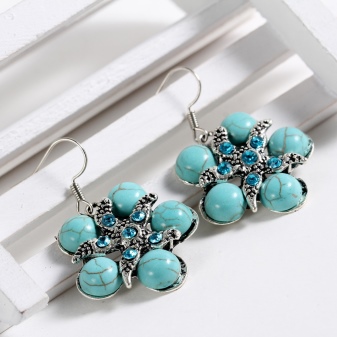
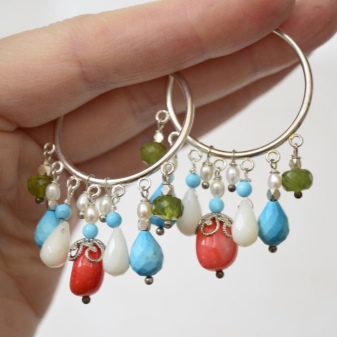
It is better to store earrings in a casket, hiding from direct sunlight, as ultraviolet discolors the mineral. It is better to go for a walk in such jewelry in the evening. Contact with water or steam turquoise for a long time is also undesirable. Before swimming, jewelry must be removed.

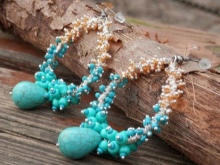
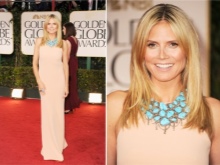
For cleaning earrings use only a dry soft cloth, you can not use brushes and liquids, as well as any cleaning substances.
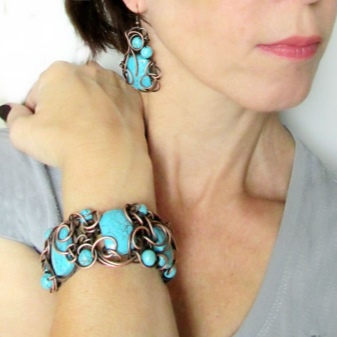
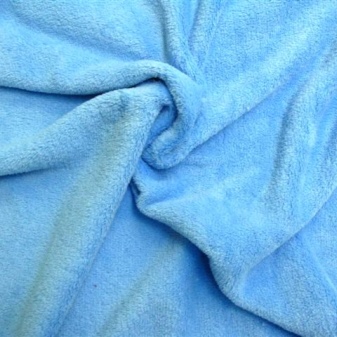
The color of stabilized turquoise is more stable than the color of raw turquoise, since due to special impregnations, the porosity of the original natural material decreases. There are different ways to strengthen the mineral, with the help of some they get a product that is almost indistinguishable in appearance from natural stone.
